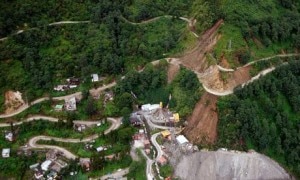(English) Nepal picking up momentum to avert natural disaster


KATHMANDU, Nepal– Nepal is prone to various natural disasters and calamities due to her broken geophysical structure, high mountains, changing climatic conditions, among others. Despite such problems, the Himalayan nation is gradually picking up the momentum towards improving the disaster management situation.
Scientists at the International Centre for Integrated Mountain Development (ICIMOD) have developed dynamic tools used to help monitor environment and early warning systems enforced to avert or reduce the impact of hazards like flood, landslides, storms, forest fires etc in the Hindu Kush Himalayas.
The interactive tools developed as part of the USAID-funded SERVIR Himalaya initiative, including Forest Fire Detection and Monitoring System which will combat disasters in the Hindu Kush Himalayas. Further, a new system have been formulated which will be useful for preventing disaster.
The system can also estimate crop productions by enabling people to adopt appropriate measures to avert draught. It is equally fruitful in conducting weakness evaluations apart from food and livelihood security analysis.
A programme was organized in the capital Kathmandu to inform about the system and tolls. On the occasion, ICIMOD showed how crucial satellite information is to monitoring agricultural production, forest fires and responding to droughts and floods.
“Through partnerships like SERVIR, scientists will be able to use cutting-edge technologies to monitor complex challenges as they happen — helping to save lives and build more resilient communities,” said Rajiv Shah, administrator of the US Agency for International Development.
On the occasion, experts also discussed ways in which decision makers can utilize newly available data in policy level to benefit people of the Hindu Kush region.
Highlighting the role of science and technology in improving regional cooperation, David, a noted scientist of ICIMOD said many of the region’s biggest challenges were transboundary in nature.
